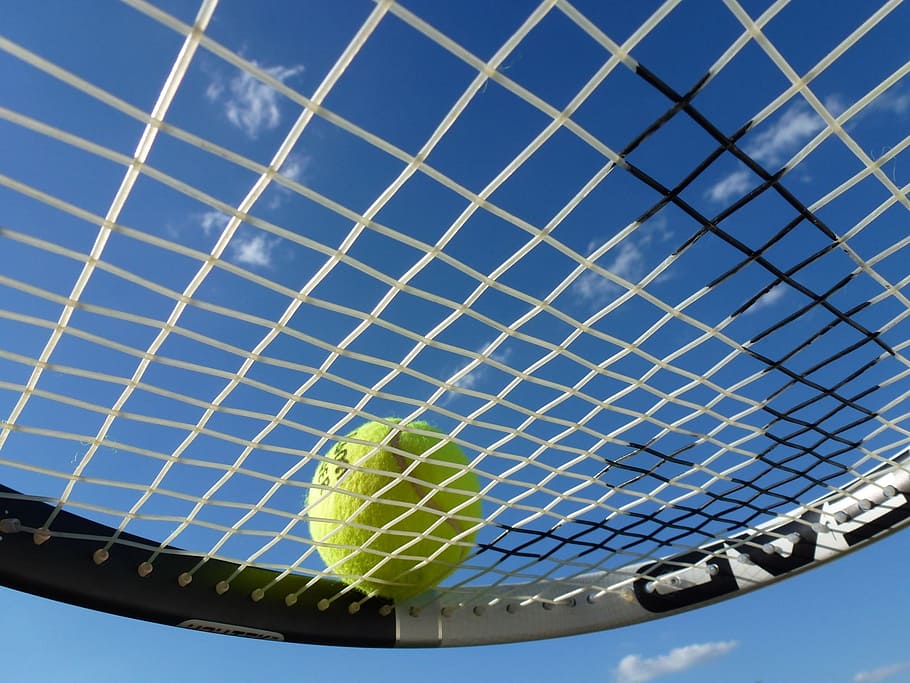Tennis has undergone a significant transformation since its inception, especially regarding equipment. A central question: who invented the tennis racket, is still debated among historians. Yet, whether it was the French, the English, or someone else, there’s no denying that the tennis racket has come a long way. From humble wooden pieces to the latest technological marvels, developing tennis rackets is an intriguing journey that reflects advancements in materials science and engineering principles.
Wooden Lawn Tennis Rackets
Wooden rackets dominated tennis during the late 19th and early 20th centuries. These rackets were often heavy, cumbersome, and lacked the power or precision of modern-day alternatives. When you think of an old tennis racket, it’s most likely one of these wooden models that comes to mind. They had their charm but presented a range of limitations, including susceptibility to weather conditions and a lack of maneuverability. However, they laid the foundation for the innovations that would follow.
The First Steel Rackets
The introduction of steel rackets in the late 1960s marked a significant milestone in the history of tennis rackets. Steel rackets allowed for a more powerful and precise game, offering greater durability and a sturdier frame than their wooden predecessors. Initially, they faced skepticism and resistance from traditionalists, but as champions started to adopt them, their merits became widely acknowledged. The advent of steel technology not only revolutionized tennis equipment but also set the stage for further material advancements.
Graphite Racquets
As the tennis racket evolution continued, graphite rackets emerged as a game-changing invention in the 1980s. These racquets were lighter and yet stronger than their steel counterparts, offering an unparalleled balance between power and control. Here is a list of advantages of graphite rackets:
- Lightweight.
- High tensile strength.
- Vibration dampening.
- Greater maneuverability.
- Reduced air resistance.
With their introduction, graphite racquets forever altered the landscape of professional and amateur tennis. Their durability and adaptability to various playing styles made them an instant hit, further spurring innovations in the design and technology of tennis equipment.
Modern Day Tennis Rackets
Today’s models epitomize the pinnacle of engineering and design regarding tennis racket evolution. Made with composite materials like carbon fiber, they offer players an extraordinary blend of strength, speed, and precision. Advanced technologies also allow for vibration control, aerodynamic design, and customizable string tension.
Other Tennis Equipment
The sport that known today is a reflection of decades of evolution. The popular game, seen on TVs across the world, gaming consoles, and even as a virtual sport in online casinos reviewed by The Casino Wizard, is much more than racquets and rules.
While the history of tennis rackets garners much attention, other elements of tennis equipment have also seen remarkable developments. Every component has been re-engineered multiple times, from balls and strings to shoes and apparel, to improve player performance, comfort, and safety.
Balls
Tennis balls have undergone several changes to meet the demands of the evolving sport. Initially made of leather and filled with various materials such as hair or sand, they have progressed to the rubber-based, felt-covered options we use today. Modern tennis balls are a product of rigorous testing for durability, bounce, and aerodynamic properties.
Strings
Strings are another critical component in the game of tennis. In early versions of the sport, players used natural gut strings derived from the intestines of animals. These have largely been replaced by synthetic materials like nylon and polyester, which offer superior durability and tension maintenance.
Shoes
In tennis, the right footwear can make a world of difference. Early tennis shoes were not specifically designed for the sport and often lacked grip and support. Today’s tennis shoes offer advanced cushioning, breathable materials, and superb lateral support. These features are essential for the fast-paced movements and quick turns that characterize modern tennis.
Clothing
Tennis clothing has seen its share of innovations, too. Initially, players wore formal attire like trousers and full-sleeve shirts, a far cry from today’s specialized apparel. Modern tennis gear is all about aerodynamics, comfort, and, of course, style. List of modern tennis apparel features:
- Moisture-wicking fabrics.
- UV protection.
- Ventilated design.
- Stretchable materials.
- Sweat-resistant pockets for holding a spare racket or balls.
Today’s tennis clothing is a technological marvel in its own right. The fabrics are lightweight, allowing maximum mobility; some even come with pockets designed to hold an extra racket or tennis balls. These advancements contribute to the comprehensive evolution that tennis equipment and apparel have undergone, shaping the sport into what it is today.
Interesting Facts About Tennis Equipment
While technical advancements steal the limelight, numerous intriguing tidbits further enrich our understanding of tennis equipment.
These lesser-known facts, from the original color of tennis balls to the role of string tension and overgrips, offer fascinating insights into the sport’s history and play mechanics.
Tennis Balls Were Originally White
Interestingly, tennis balls weren’t always the bright yellow we’re accustomed to seeing today. They were originally white, which was standard until the 1970s.
The shift to yellow came about because yellow balls are easier to see, both for players and television audiences. The change was so effective that it became the norm, proving that even seemingly minor tweaks can significantly impact the game.
String Tension Affects Playability
The tension of your strings can dramatically influence how your racket performs. However, many might not know that this tension interacts with the material of the strings to produce different effects.
A looser tension generally provides more power but less control, while tighter tension offers the opposite.
Overgrips Enhance Grip Comfort
Overgrips are often an overlooked component of tennis equipment, yet they play a crucial role in a player’s performance. These thin, padded layers wrap around the racket’s original grip, providing extra cushioning and sweat absorption.
Overgrips can significantly improve comfort and playability, reducing hand fatigue and improving grip during lengthy matches. Their importance cannot be overstated, especially for players who engage in intense, competitive games.















